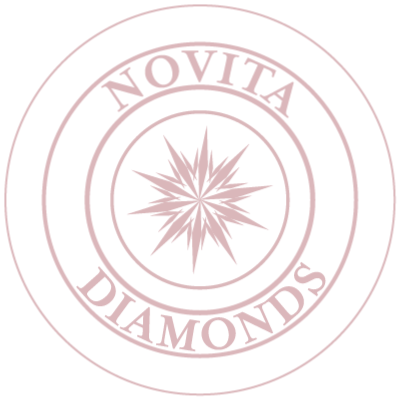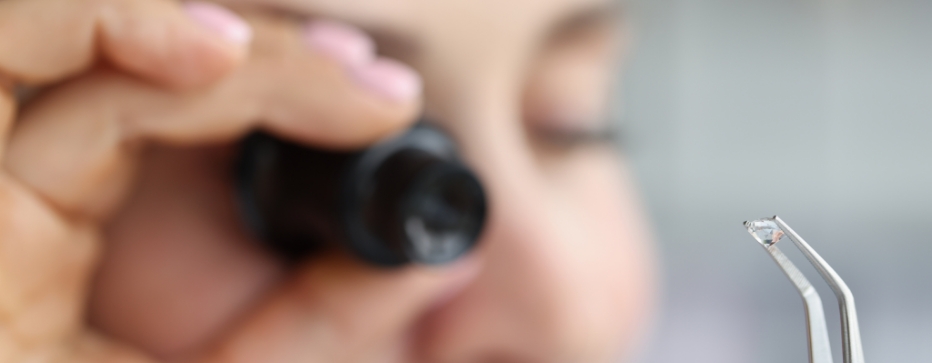BOOK AN APPOINTMENT


Since the late 1800s, scientists and engineers have been fascinated by the process of creating a true diamond in the lab. Before 1955, creating a fully lab grown diamond was nothing more than a pipe dream until General Electrics proved that it was finally possible to create a fully lab grown diamond. Nevertheless, these diamonds were far from those that most people were familiar with, being small and of very low quality. For a further half-century, lab diamonds would remain unmarketable and unsellable, only finding use in industrial applications. The development of new technology at the turn of the millennium would soon change all that when it became possible to grow high-quality diamonds reliably.
Natural forces grow diamonds from the earth over a very long period of time, producing them through incredibly high temperatures and pressures. In a lab, those conditions are mimicked, but the process is sped up considerably to create man made diamonds.
Diamonds mined from the earth, and those grown in laboratories are completely indistinguishable from one another; even the best gemmologist cannot distinguish between the two because lab grown diamonds have the same molecular and chemical composition as mined diamonds, hence the same physical and optical properties.
Imitations or knockoff diamonds cannot claim the same. Let’s delve deeper into what makes a diamond truly a diamond, not an imitation. Basically, diamonds are pure carbon with a unique sold form, which is only one of several allotropes of carbon solids that exist depending on their chemical bonds. Diamonds are the only gemstones made up of a single element, typically about 99.5% carbon. They are crystalline forms of carbon allotropes. In the remaining 0.05%, there may be trace elements, atoms of other elements, such as boron and nitrogen, that are not essential to a diamond’s chemistry or structure but affect its shape or colour. In both mined and lab grown diamonds, these trace elements are naturally formed as part of the creation process, including radiation exposure.
Only the price of lab grown diamonds and mined diamonds differs, and that is not a small difference. A lab grown diamond is, on average, a staggeringly 75% cheaper than a mined diamond. The price difference is not because of a quality difference, contrary to misinformation deliberately spread on the web. Lab grown diamonds are more affordable owing to healthy competition between labs, as opposed to the anti-consumer monopolies that have dominated mined diamonds. As a point of comparison, if a mined diamond were to cost $10,000, a lab grown diamond of equal quality and characteristics would cost around $3,000, representing huge savings for customers.

It is inherently impossible to trace mined diamonds, as it is with other pure elements like copper and iron. Unlike natural diamonds, lab grown diamonds can be traced back to the original lab that produced them. Mined diamonds are often sold with reassuring terms like “clean origin” or “conflict free”, but their true origins can never really be confirmed with any degree of certainty, regardless of what the diamond companies claim. In reality, all these claims amount to nothing more than marketing buzzwords to reassure clients since earth-mined diamonds change hands at least 30-40 times from their extraction to their final sale.
Any capable laboratory can grade and certify diamonds that are grown in a lab as well as diamonds that are mined. The certificates are identical as far as certification is concerned; they contain the same information. Laboratory-grown diamonds will only have an indication such as “Laboratory-grown” or “Laboratory-created” on their certificate for clarification purposes in order to differentiate them from mined diamonds.
Diamonds are graded according to the 4Cs, which are colour, clarity,cut, and carat. Robert M. Shipley, the founder of the Gemmological Institute of America (GIA), developed this ground-breaking grading system. Since lab grown and mined diamonds are identical, they are graded using the same tools and methods using the same universal grading system, the 4Cs. Again, just to reiterate, laboratory grown diamonds and mined diamonds are identical except for the price.
A topic that we and many others in the industry are passionate about is that of Ethical versus Unethical diamonds. It is precisely this issue that prompted us to deal exclusively with lab grown diamonds and not mined diamonds.
It has been proven time and time again that diamond mining harms both the environment and the people who mine them as well. There is an unfathomable human cost associated with extracting a conflict diamond. In the mining process, whole populations are displaced and harmed, including miners, many of whom are enslaved, their children, and their families. Even disregarding the human cost, diamond mining, or mining for any stone, requires cutting and sifting through an incredible amount of soil. In order to provide a rough idea of the scale of mining, it takes 250 tonnes to dig up 1 carat of gem-quality diamond. The destruction of so much habitable land as a result of blowing up and digging up mountains to find a single small stone destroys entire communities and ecosystems.
There are other dire consequences of mining besides the destruction of the earth. A monumental amount of energy is also needed for the mining process, which almost always comes from fossil fuels. An enormous amount of carbon dioxide is emitted from this industry, and it is almost always underreported. Furthermore, a variety of toxic chemicals are constantly mixed with water, often from aquifers and rivers, to process ores and clean gems like diamonds. In the end, the toxic slurry is unceremoniously dumped on the previously fertile land, thereby practically contaminating it. Whether it is rivers, ponds, or, most importantly, groundwater, essential drinking sources are rendered unfit for consumption. Thus, it comes as no surprise that we take the ethical versus unethical debate very seriously as a young company trying to bring positive change. In order to ensure that our customers receive only the most ethical and sustainable products, we will never be a party to the destruction of the earth and its inhabitants.

An industry term referring to the full range of steps that a diamond goes through during its entire lifecycle is called ‘rough to retail’. The end-to-end process begins with finding a mined diamond or creating a lab grown diamond and ends when it’s sold to the final customer after entering the retail market. From ‘Rough to Retail’, lab grown diamonds are processed in the same manner as mined diamonds, including sorting, cutting, polishing, grading, and certification. Due to the identical intervening processes and costs, both lab grown and mined diamonds are exactly the same in ‘Rough to Retail’
An interesting fact is that mined diamonds tend to be more suitable for ideal/excellent Cut grades than man-made diamonds. As mined diamonds come in all shapes and sizes, they are shaped and cut to maximize their yield as much as possible, prioritizing ct weight above all else. On the other hand, a grown diamond will be cut specifically for the best cut possible and, on average, will result in stones of a superior cut grade due to labs focusing on growing diamonds into shapes that are ready to be easily cut into gems.
 FAQ'S
FAQ'SYes, they are real diamonds. They are created using the same chemical and physical processes that happen naturally inside the Earth but are grown in a controlled laboratory environment where a starter seed of diamond crystal gradually becomes bigger as more and more carbon atoms are deposited on it. Lab made diamonds are chemically, physically, and optically identical to natural diamonds and are scientifically proven to be real diamonds. IGI and GIA, two of the world's foremost authorities on diamonds, coloured stones, and pearls, grade man made diamonds the same way they grade mined diamonds using the same scale.
The price is significantly lower than the price of mined diamonds. The exact price difference will depend on various factors such as the size, quality, and specific type of diamond, but on average, lab created diamonds are around 75% cheaper than natural diamonds. This is because the cost of producing rough is much lower than the cost of mining and extracting rough natural diamonds from the Earth. However, the rest of the process that a rough diamond, whether from a mine or a lab, goes through to be retail ready, like cutting, polishing, certification, shipping, and insurance are all exactly the same.
JYes, they do. When using a diamond tester, all lab created diamonds will test as diamonds. Chemically, physically, and optically there is no difference to a natural diamonds, so they will exhibit the same properties and characteristics when tested. This includes hardness, refractive index, thermal conductivity, and other properties that are unique to diamonds, both mined and man made.
Yes, most lab diamonds have inclusions, just like natural diamonds. Inclusions are natural imperfections that are found within diamonds, and they can occur in both natural and lab made. Inclusions can take many different forms, such as tiny bubbles or carbon deposits that were trapped inside the diamond as it was forming. Just like natural diamonds, most diamonds created in labs have flaws, and only very few become flawless. Check our 4Cs guide to learn more about colour, clarity, cut and carat of diamonds.
Yes, all lab diamond rings in UK and jewellery can be insured. All lab created diamonds are considered to be real diamonds, so they can be insured just like mined diamonds. You can purchase insurance from any company that accepts jewellery insurance. Insurance policies vary but usually they cover the cost of replacing or repairing your item if it is lost, stolen, or damaged. It is important to read the terms of your insurance policy carefully to understand what is covered and what is not.
It may be that the ring is too wide or too tight. In both cases we offer you a free ring size change within the first 12 months after purchase of the ring.You can either book an appointment on site and drop off the ring and have your ring size measured by our staff, or you can let us know by phone or email and send the ring back to us.
The ring size change takes 1-2 weeks on average.
Yes, all diamonds have their own certificate. These are handed out by IGI (International Gemological Institute) or GIA (Gemological Institute of America). Two world leading companies that specialize in the certification of gemstones. IGI and GIA evaluate lab diamonds according to the same criteria as natural diamonds.The certificate number is always engraved in the corresponding diamond, which always guarantees that diamond and certificate belong together.
